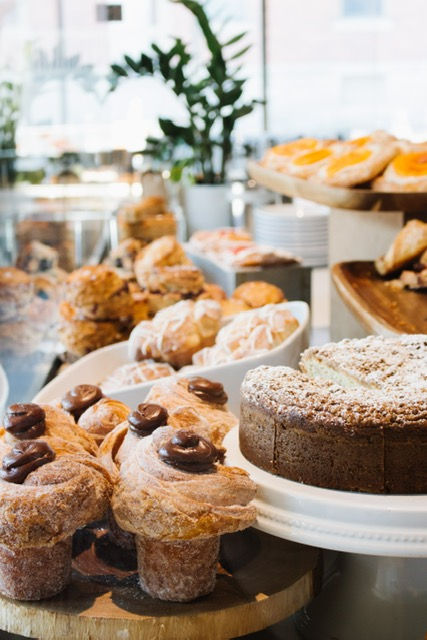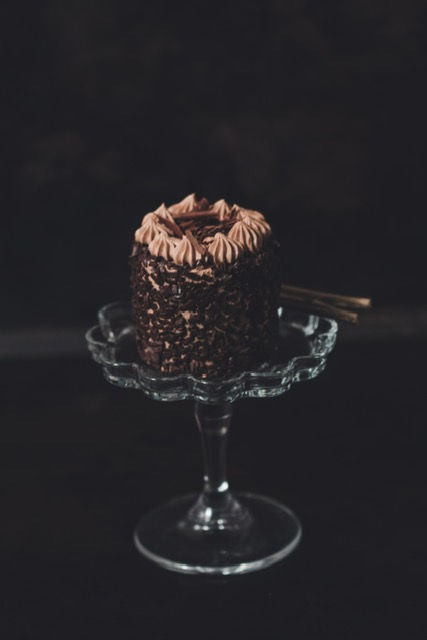Patisserie Perfection
- Paul McClanahan

- Apr 27, 2020
- 4 min read
The typical kitchen brigade has many different titles, each requiring unique skills to prepare their culinary creations. The Patisserie (Pastry Chef) is one of the most highly respected members of the team. His/her preparations must be executed with precision. Like math, any mistake early on will result in a wrong answer. In other words a kitchen disaster. When we think of the Patisserie we usually associate them with anything containing flour; cakes, pies, breads, tarts, and pastries. Yes, this is true, but these pastry masters are also well trained in the creation of silky-smooth sauces, decadent custards, and sweet creams. The most traditional of these desserts are my favorite ways to end a great meal. Simple ingredients combined with great skill results in a great dessert.

Creme Patisserie (Pastry Cream) is technically a custard. Flour, cornstarch, or gelatin are added to thicken it since it isn't baked like a standard custard. This luscious fillings roots go back to Ancient Roman times. Recipes were also documented during the Middle Ages, The ingredients are simple but preparation requires precision. Egg yolks, milk, sugar, vanilla bean, and flour are whisked together in batches over a double boiler until thick and smooth being careful not to exceed 175 degrees. Once it's finished cover it directly with plastic wrap and chill. Creme Patisserie can be used to create several dessert standards; Boston cream pie, banana pudding, trifles, and my favorite, as a pastry filling.
Creme Anglais (English Cream) is basic yet the most versatile of dessert sauces. It is a thinner version of custard without the flour, requiring more milk. Preparing this popular sauce is relatively simple. Whisk egg yolks and sugar together and add hot milk not exceeding 156 degrees. A fresh vanilla bean is a flavor option. Like custards, Creme Anglais has a long history in the dessert realm. Use it as a sauce for numerous desserts especially those featuring fresh fruit. The cream can also be a dessert on its own; pour the sauce into a bowl and top with baked meringue and top with pecans and you've got an old classic, a floating island. Pour it in an ice cream maker and you've got vanilla ice cream.

Zabaione (Sabayon) is another egg-based sauce developed over a double boiler. Eggs, sugar, and wine are whisked together briskly, the goal is to incorporate as much air as possible resulting in a thick and rich sauce. Cognac, Marsala, or my favorite, champagne, can replace the wine. Use brandy to create a ready to drink eggnog. This sauce is especially popular in South America where it is one of the continents most popular ice cream flavors. Zabaione is a perfect topping for fresh fruit, especially berries. It is also great served pastries, sponge cakes, and ladyfingers. I enjoy placing fresh strawberries on an oven-safe plate, pouring the sauce over the berries. To finish, place it under the broiler until golden brown and enjoy.
Chocolate Mousse is the most decadent sweet cream dessert. Light and fluffy with rich bittersweet chocolate flavor. They can also be prepared to pair with savory dishes. The sweet chocolate version’s history goes back to the 1700s. Some recipes require gelatin which I prefer not to use when I'm cooking. Try this classic recipe for mousse perfection. Melt 15 oz. of chocolate, I prefer 72% cocoa. Add 9 oz. of butter and cool. Whisk in 7 yolks while whipping 11 egg whites, later adding 2 ½ oz. of sugar until stiff peaks form. Combine the whites with the chocolate in 2 batches, gently folding. Add cream whipped until soft peaks, fold until smooth and chill 2 hours. Guaranteed to please any chocoholic.

Key lime pie is a relative newcomer on the custard scene and its popularity is soaring throughout the U.S. Originating in the Florida Keys where it is consumed frequently on warm, humid summer days. The pie requires no baking, it thickens due to a chemical reaction. This "chemical custard" is formed when the acid from the limes causes the proteins in egg yolks and sweetened condensed milk to coagulate. Using real Key limes is important due to their acid content. If your grocer doesn't carry them the bottled product works just fine. Key lime pie will also be a pale yellow color due to the color of the juice. Traditionally a graham cracker crust is used and it's topped with meringue. Whipped cream works too.
The tradition of Patisserie training is still followed by rigorous standards throughout Europe. Candidates go through a long training process, usually as an apprentice. The titled is then bestowed on the individual after passing a written exam. Desserts today are getting top billing along with their savory main dish counterparts. The Cheesecake Factory chain is a perfect example. Mid to high end priced restaurant desserts are a far cry from apple pie served with a scoop of vanilla ice cream. Don't get me wrong that is a classic which I love. Using these basic creations, pastry chef's have really amped up their game creating ample opportunities for those interested in the craft. Although it's a demanding position the result is...sweet Patisserie perfection.



Comments